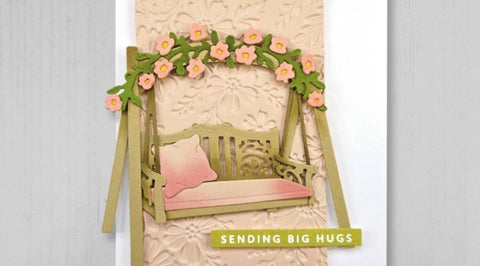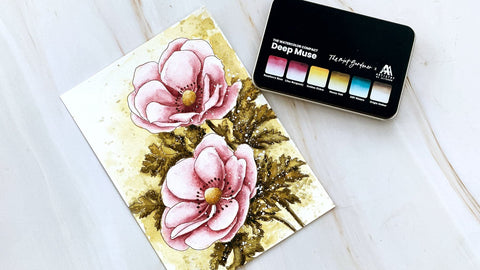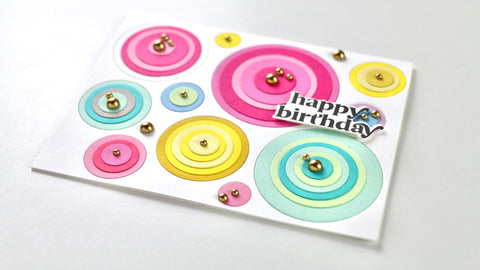Fun Beginner Shading Techniques With Alcohol Markers
Last Updated: October 27, 2025
Let's do a little activity, shall we? What is the most life-like drawing or work of art you've seen? What makes it look real?
If you ask us, there is a high chance that the artist used shading to produce such a marvelous masterpiece. In drawing, shading is the process of adding layers of a coloring or writing tool like a pencil to produce various tones and contrasts. Hyper-realistic drawings that almost look like they could be photographs are created using expert shading techniques.

Tropical Garden Artist Alcohol Markers Set
Although "shading" is frequently used to describe pencil drawings, it can also refer to other media. For instance, if you're using a fine liner pen, you can utilize hatching and cross-hatching techniques to give your drawing a shaded appearance.
Now imagine using the ever-versatile alcohol markers in your drawings—oh, the lovely colors! Well, you don’t have to imagine it because we will show you how in this blog post.
Whether you’re a beginner or an experienced artist, learning to shade with alcohol markers will enhance your coloring skills and bring your creations to life. So, let's explore some exciting techniques and tips to help unleash your creativity using alcohol markers.
How to Use Alcohol Markers
Before diving into shading techniques, let's briefly understand what alcohol markers are and why they are an excellent choice for shading and coloring.
Alcohol markers use an alcohol-based ink that dries quickly, allowing for seamless blending and layering. They offer vibrant colors and smooth application and can be used on various surfaces, including paper, cardstock, and even certain plastics.
If you want to try shading or coloring with alcohol markers, you'll need a few essential tools:
- Gather a set of alcohol markers in various colors to create depth and dimension in your artwork.
- Keep a colorless blender marker on hand to help blend and remove excess ink.
- As for your paper, the smooth-surface of thick cardstock will provide the best results because it allows the ink to glide effortlessly.
How to Shade With Alcohol Markers
Now that you know what materials to gather, let's explore some alcohol marker techniques!
Layering
One way to get started on shading with alcohol markers is through layering.
Layering is adding one color over another. But because we're talking about shading techniques, it would be best to stick to a gradient or know your way around the color wheel. The process involves building up layers of translucent or transparent colors on each other to create various effects and bring out different aspects of the artwork.

Sunshine Valley Garden Artist Alcohol Markers Set
Each layer adds a new level of color and detail, allowing for greater control over the final result. By gradually building up layers, artists can create variations in tone, texture, and hue, enhancing the overall visual impact of the artwork.
Layering can create subtle transitions between colors, add highlights and shadows, or make a sense of depth. This technique gives artists more control over the final appearance of the artwork and enables them to achieve a more excellent range of colors and visual effects.
Blending
Blending is a basic but handy technique to give your work a polished appearance. When you blend, you smooth away lines and produce beautiful gradients. In blending, artists typically use a blender marker or a lighter color of the marker that they want to blend. A blender marker is a special type of alcohol marker that is designed to help you blend colors or even delete mistakes.

Nature's Views 24 Artist Alcohol Markers Bundle
Layering and blending often go hand in hand—the layers are much more seamless if you blend the darker and lighter tones, blurring the lines between the two colors.
Highlighting and Shadowing
Highlighting and shadowing are two essential art techniques that can add depth and realism to a drawing or painting. By understanding how light works, artists can create realistic highlights and shadows that make their subjects appear alive.
The first step in creating highlights and shadows is to choose a light source direction. This will determine where the light hits the subject and how the shadows are cast. Once the light source direction has been selected, the artist can add highlights and shadows to the subject.

Water Garden Artist Alcohol Markers Set
Highlights are the areas on an object exposed to the most light. They are typically lighter in value than the rest of the object and can be used to create a sense of brightness and contrast.
On the other hand, shadows are the areas on an object that are not exposed to light. They are typically darker in value than the rest of the object and can be used to create a sense of depth and volume.
It is essential to gradually build up the layers when adding highlights and shadows as this helps create a more realistic and natural look. It is also important to blend the highlights and shadows smoothly so there’s a seamless transition between the light and dark areas of the subject.

Rock Garden Artist Alcohol Markers Set
With some practice, artists can learn to create realistic highlights and shadows that add depth and realism to their drawings and paintings.
Here are some additional tips for creating highlights and shadows:
- Use a variety of shades to create a more realistic look.
- Blend the highlights and shadows smoothly.
- Pay attention to the direction of the light source.
- Use complementary colors to create more realistic shadows.
- Experiment with different techniques to find what works best for you.
Enjoy Shading and Coloring With Alcohol Markers
Coloring and shading with alcohol markers opens up a world of creative possibilities for paper crafters and coloring enthusiasts.

Space Garden Artist Alcohol Markers Set & Coloring Sheet Bundle
You can add depth, dimension, and realism to your artwork by mastering these beginner shading techniques. So grab your alcohol markers, unleash your imagination, and watch your creations come to life with vibrant shades and stunning blends. If you need inspiration and design ideas to practice shading techniques, visit the Altenew Blog!
















Thank you for sharing, Melanie! We are so grateful to be part of your journey!
I am so grateful for all the tips, classes and products you provide me. Paper crafting became my life raft and oasis after a tragic loss 3 years ago. THANK YOU Altenew, for being a huge part of my journey and helping my heart feel some light again ❤️